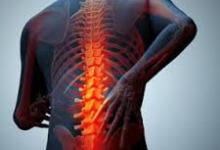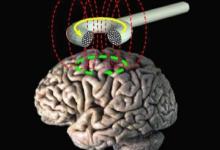Consensus Against Interventional Injections for Chronic Spinal Pain Save

BMJ has published a clinical practice guideline resulting from the work of an international, multidisciplinary panel addressing chronic spine pain (≥3 months duration) not associated with cancer or inflammatory arthropathy. This is a chronic (not acute) spine pain guideline.
The global prevalence of chronic low back pain has been estimated at 4% among adults aged 24-39 years and 20% among adults aged 20-59. In 2016, low back and neck pain accounted for the highest healthcare spending in the US at $134.5 billion.
Chronic spine pain is a common, potentially disabling complaint. Currently clinical practice guidelines provide inconsistent about the use of interventional procedures for those with chronic spinal pain. This paper deals with effectiveness and safety of commonly used interventional procedures (such as spinal injections and ablation procedures) for chronic axial and radicular spine pain (≥3 months duration).
An international guideline development panel included four chronic spine pain patients, 10 clinicians with experience managing chronic spine pain, and eight methodologists, who produced these recommendations using GRADE methodology after applied to a systematic review and network-meta-analysis that included 132 randomised trials, 81 trials and 7977 participants. Interventional procedures compared with usual care or sham procedures in patients with axial or radicular chronic spine pain.
There was no high certainty evidence of important pain relief for any intervention for either chronic axial spine pain or chronic radicular spine pain. All interventional procedures supported by moderate or low certainty evidence showed little to no pain relief compared with sham procedures
For chronic axial spine pain (≥3 months), the guideline panel issued strong recommendations against:
joint radiofrequency ablation with or without joint targeted injection of local anaesthetic plus steroid
epidural injection of local anaesthetic, steroids, or their combination
joint-targeted injection of local anaesthetic, steroids, or their combination; and intramuscular injection of local anaesthetic with or without steroids.
For chronic radicular spine pain (≥3 months), the guideline panel issued strong recommendations against:
dorsal root ganglion radiofrequency with or without epidural injection of local anaesthetic or local anaesthetic plus steroids
epidural injection of local anaesthetic, steroids, or their combination.
The Guideline panel was confident in stating the following, relative to sham procedures:
Moderate certainty evidence showed that, for chronic axial spine pain, epidural injection of local anaesthetic (with or without steroids) and joint-targeted steroid injections probably have little to no effect on pain relief
Moderate certainty evidence showed that, for chronic radicular spine pain, epidural injection of local anaesthetic with steroids and dorsal root ganglion radiofrequency probably have little to no effect on pain relief
The panel was less confident about:the effect of intramuscular injection of local anaesthetic (with or without steroids), epidural injection of steroids, and joint-targeted injection of local anaesthetic (with or without steroids) on pain relief.
These recommendations do not apply to patients with chronic spine pain due to cancer or inflammatory arthropathy or those with acute spinal pain.







If you are a health practitioner, you may Login/Register to comment.
Due to the nature of these comment forums, only health practitioners are allowed to comment at this time.